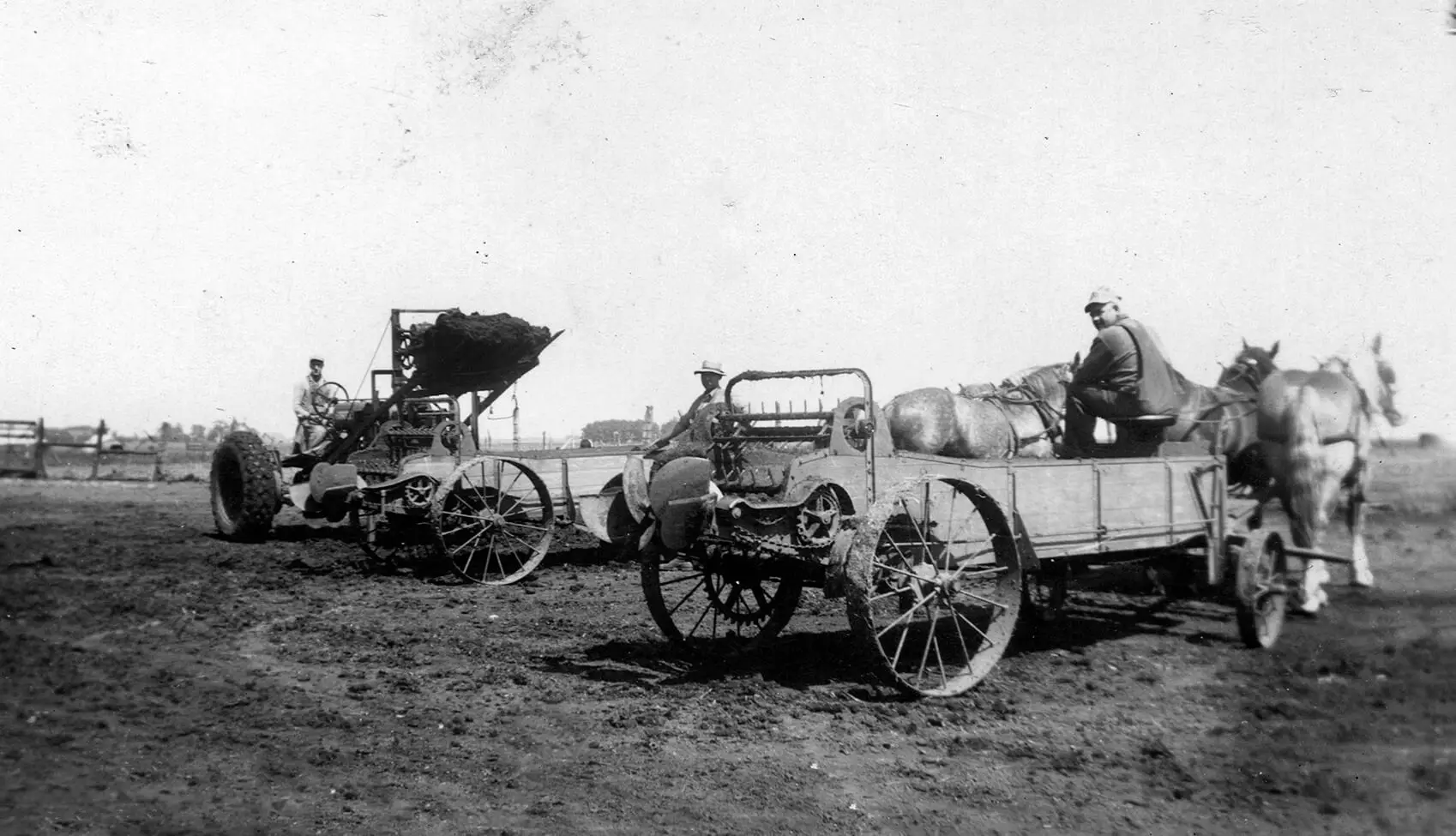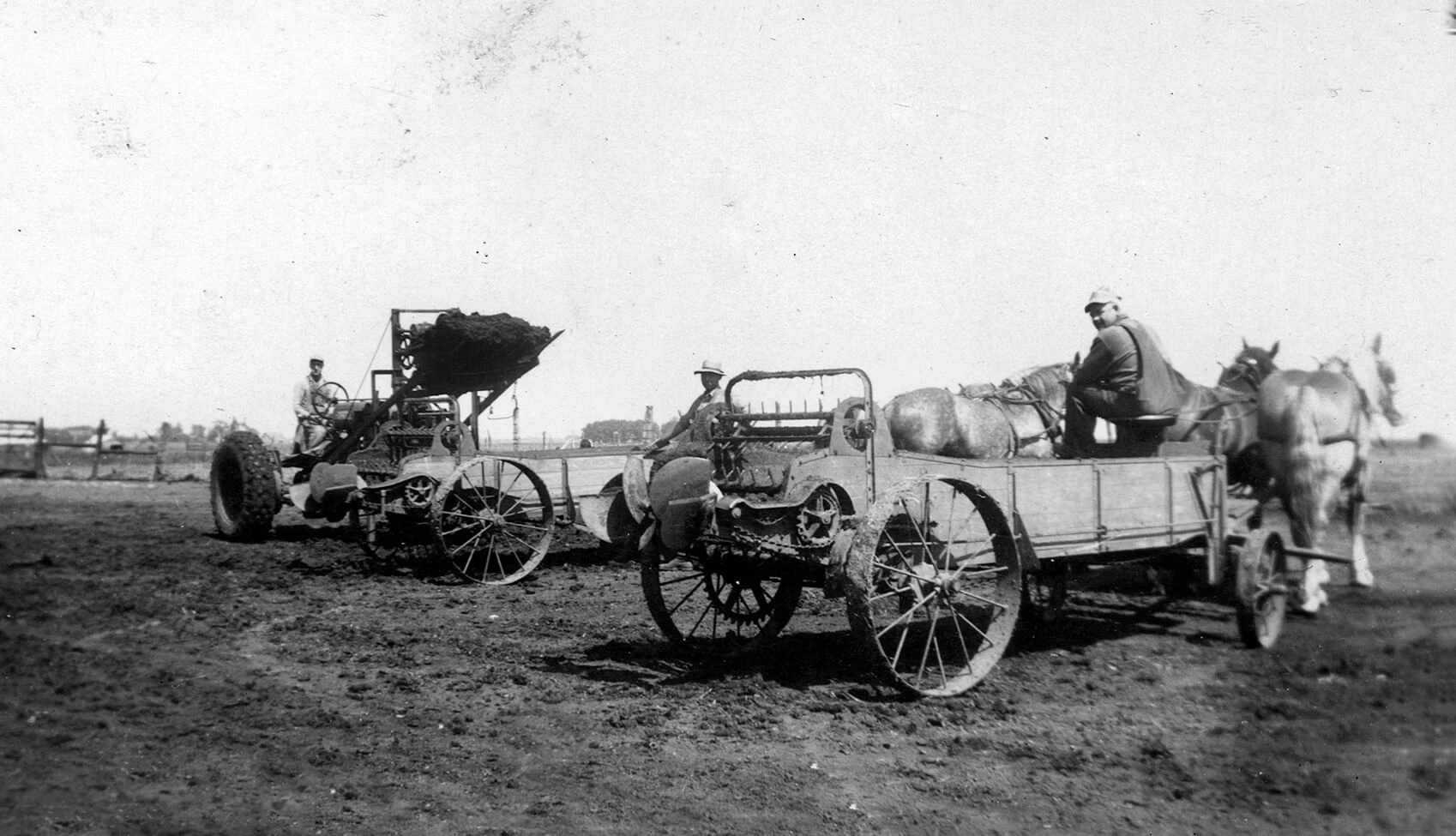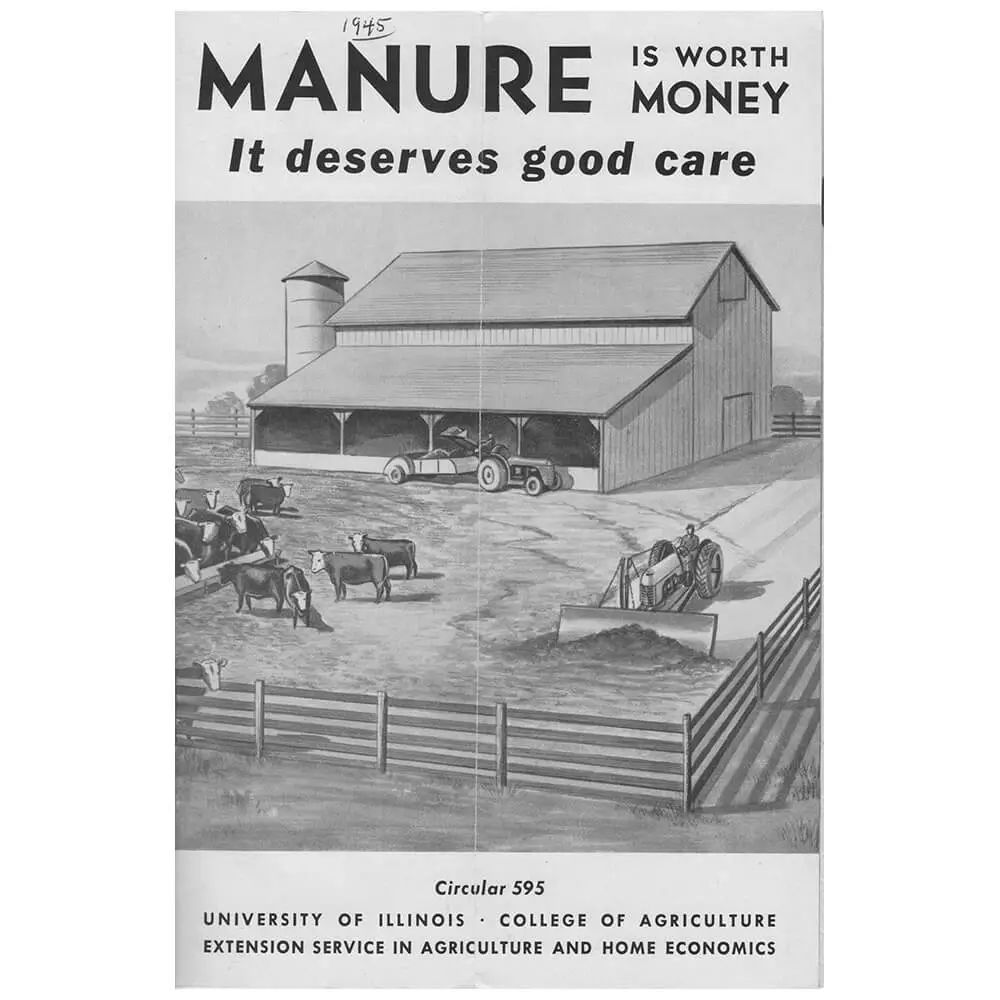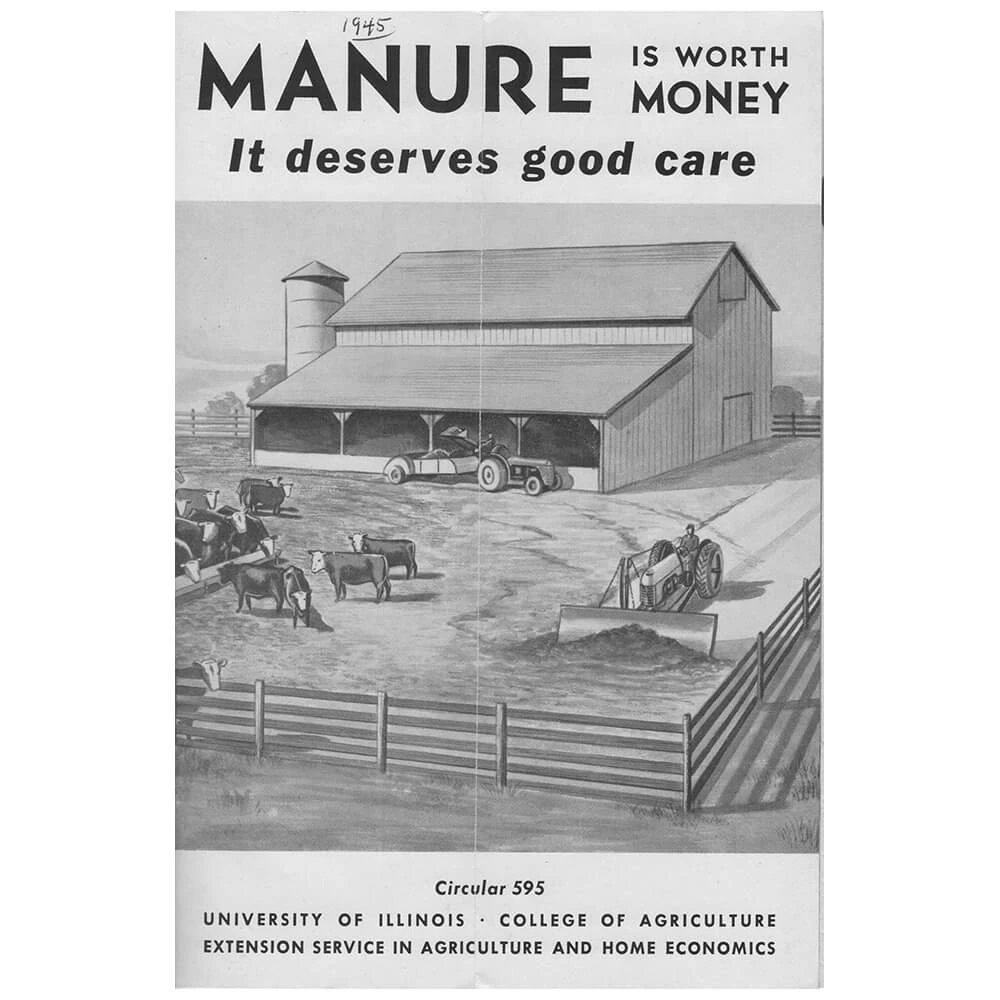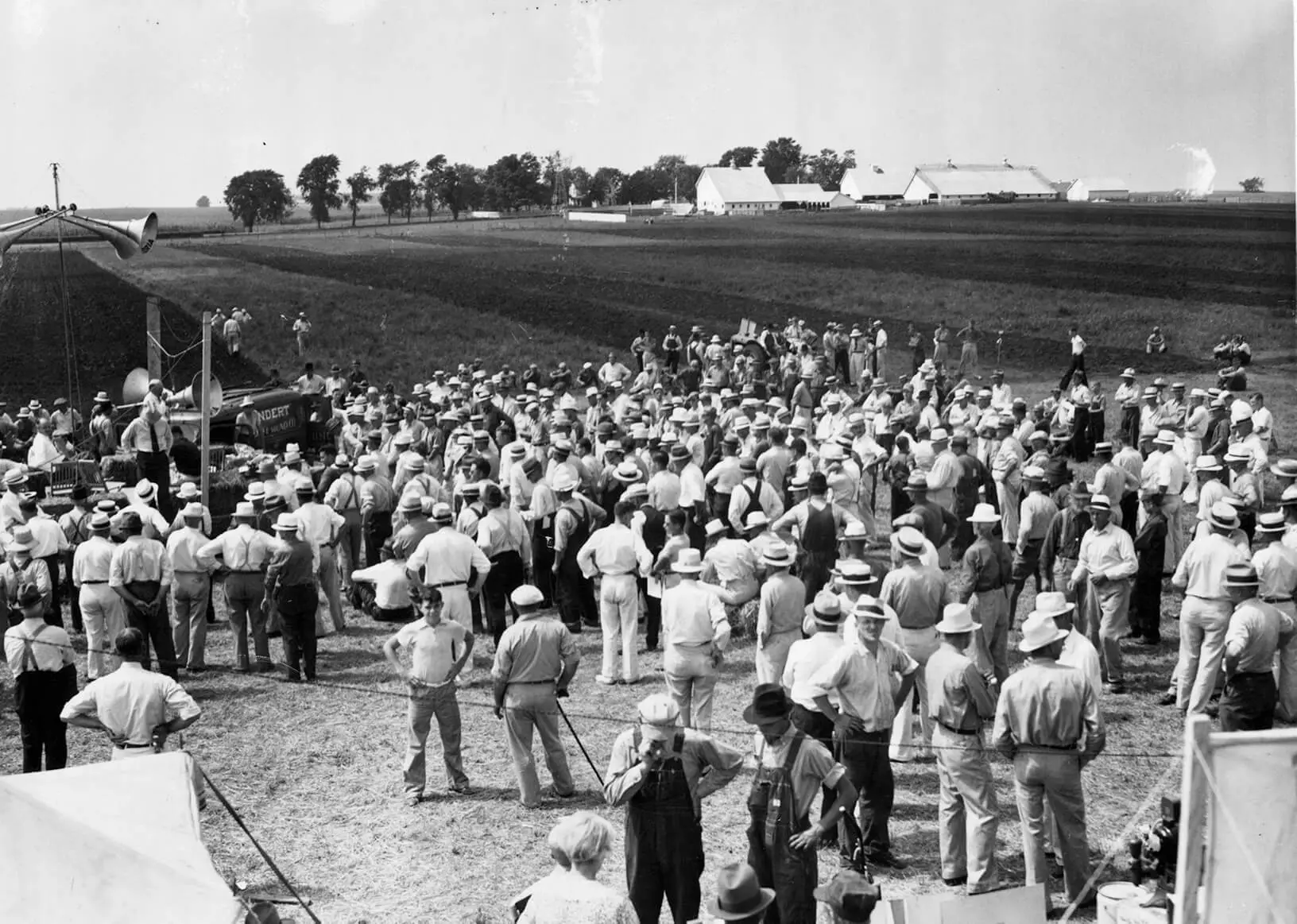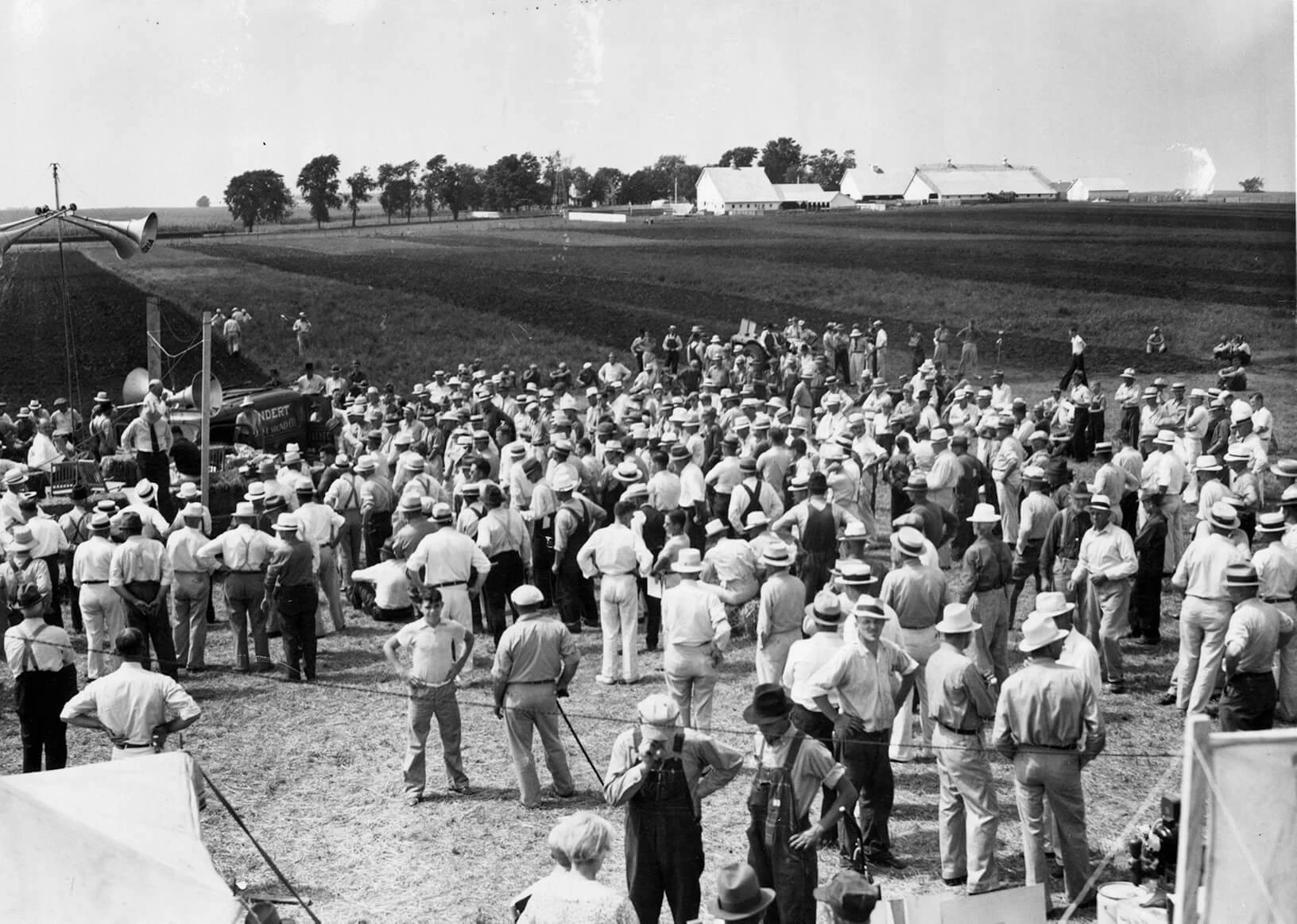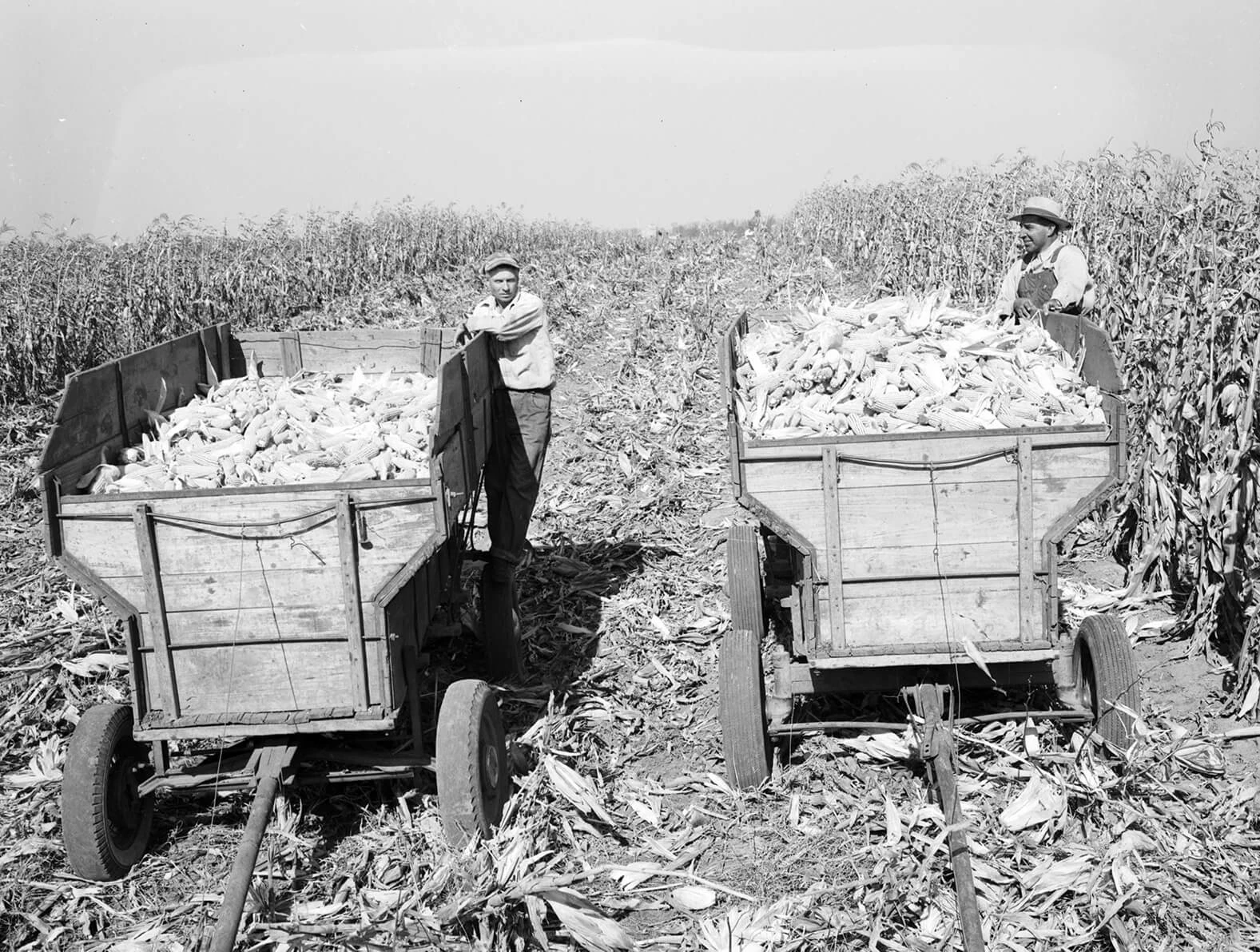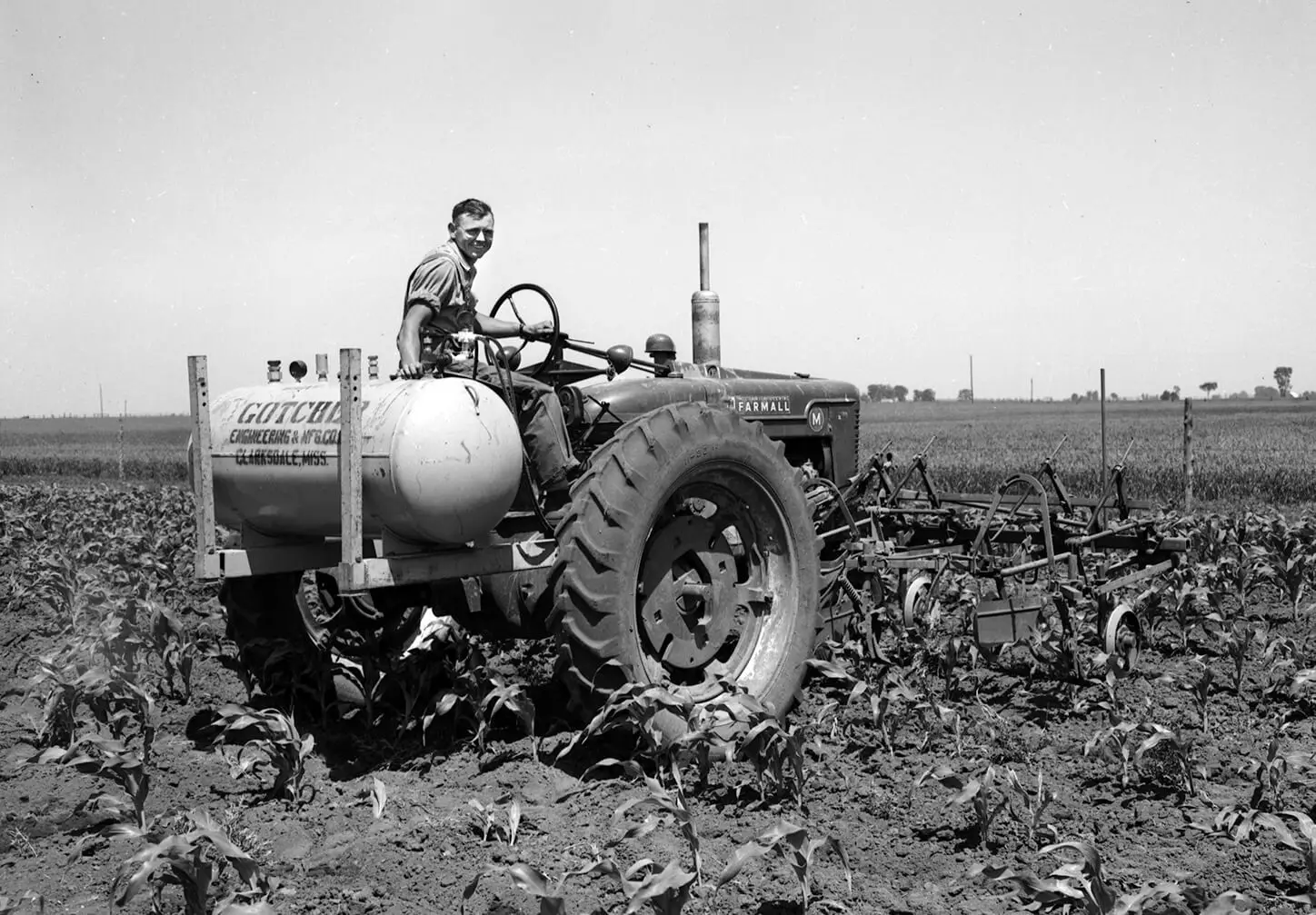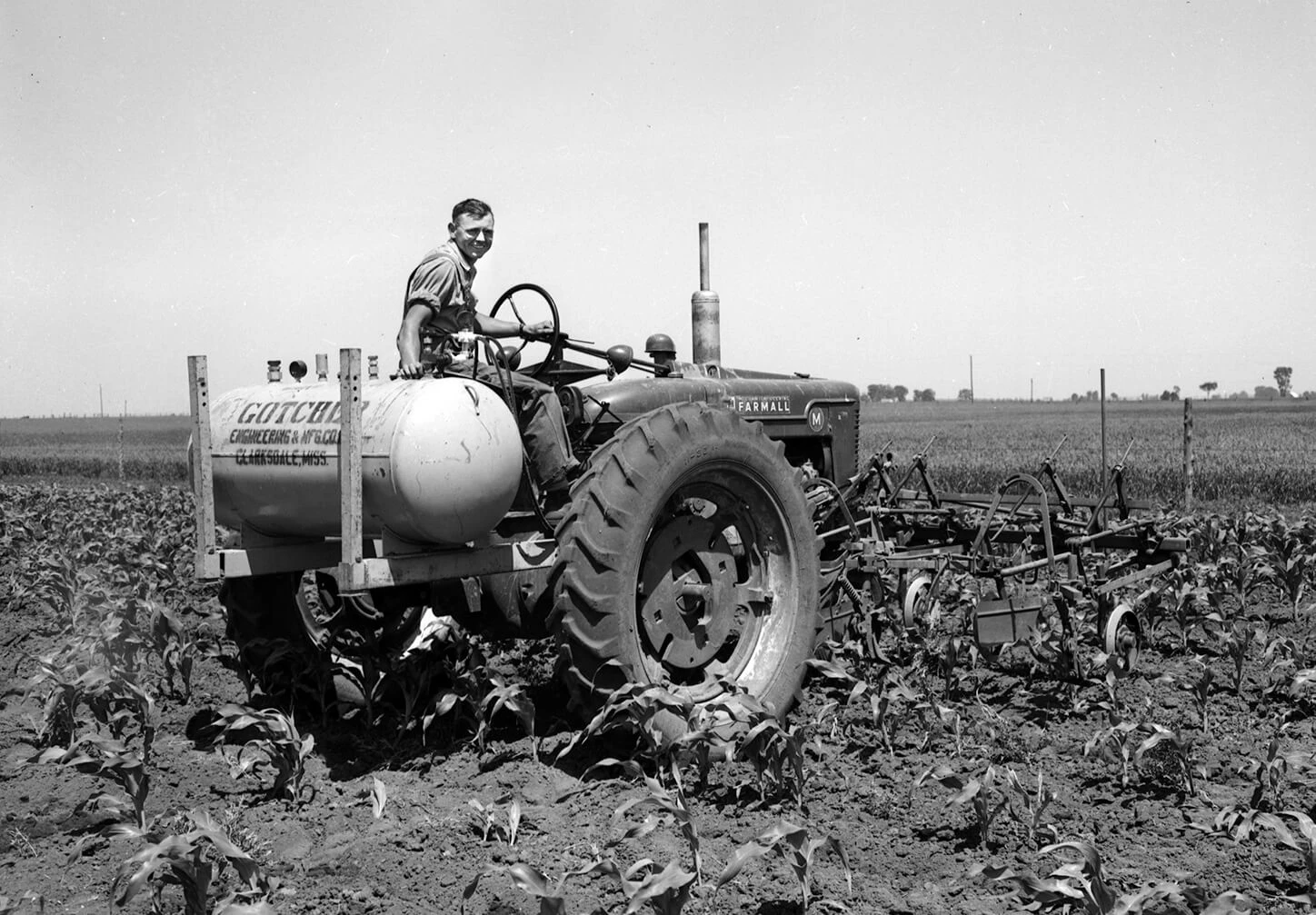Our Rich Land – Fertilizer
Livestock Manure
McLean County farmers knew that livestock manure could replace valuable nutrients taken from the soil with each crop. But getting it to the field was a backbreaking task.
The manure had to be shoveled into a wagon, taken to the field, then shoveled onto the field.
A new tool, the manure spreader, first introduced in the late 1800s, was the farmer’s friend. Those who invested in this equipment eliminated much, if not all, of the shoveling required to spread manure.
As spreaders improved, the application of manure became a standard practice of many farmers. Some purchased manure from livestock farmers who had more than they needed to apply on their own farms.
To eliminate the back breaking job of loading a spreader with a pitchfork, Marion Welsh, a tenant farmer on the Davis farm near Gridley, and his sons Ralph and Dave, purchased a loader. They mounted it on their neighbor Clarence Shanebrook’s tractor.
The work was quick as the Welshes, Shanebrook, and another neighbor, Ralph Downen, all shared the equipment and helped each other to complete this job on all three farms.
Forage Crops
Scientific research revealed that nitrogen was a key nutrient for corn crops. Because of this, many early 20th century farmers grew forage crops, such as alfalfa, hay, clover, and soybeans, that pulled nitrogen from the air, then plowed them under.
The process ensured that a good source of nitrogen was available for the next corn crop. It also added organic matter, which increased the soils ability to resist wind and water erosion.
Manufactured Nitrogen Fertilizer
The introduction of manufactured nitrogen fertilizer made it easier to add nitrogen to the soil.
Covell farmer Russell Teutsch experimented with high nitrogen fertilizer on the Kleineau farm south of Yuton in 1950.
Teutsch applied nitrogen fertilizer to the entire field, except for 10 rows in the middle.
When he harvested the corn from the middle rows they yielded 55 bushels per acre while the fertilized acreage yielded 70 bushels per acre.
Anhydrous Ammonia
In 1949 Leslie Miller, tenant farmer on the George Holder farm east of LeRoy, tried a new method of getting nitrogen into the soil.
Having read about the application of anhydrous ammonia (a form of nitrogen gas) in the south, both Holder and Miller visited Mississippi cotton farms to see how it was applied.
The successful use of anhydrous ammonia as a fertilizer became standard practice for Miller and others soon followed his lead.
Miller and Holder fitted a 100-gallon tank behind the tractor seat to hold the anhydrous ammonia.
To the cultivator they fastened four narrow shovels that cut into the ground six inches. Directly behind the shovels, small tubes were installed that released the anhydrous ammonia where it was quickly absorbed by the soil.
 Making a Home
Making a Home
 A Community in Conflict
A Community in Conflict
 Working for a Living
Working for a Living
 Farming in the Great Corn Belt
Farming in the Great Corn Belt
 Abraham Lincoln in McLean County
Abraham Lincoln in McLean County
